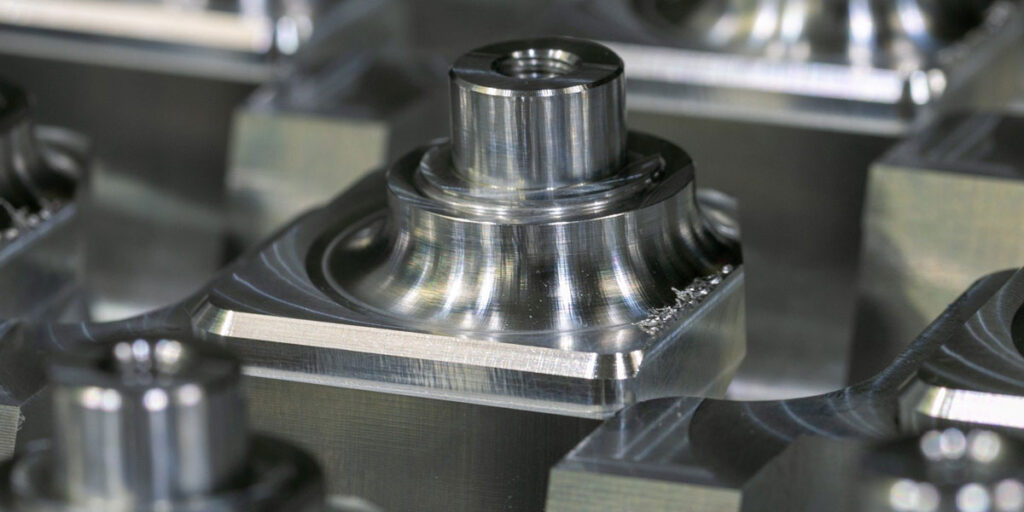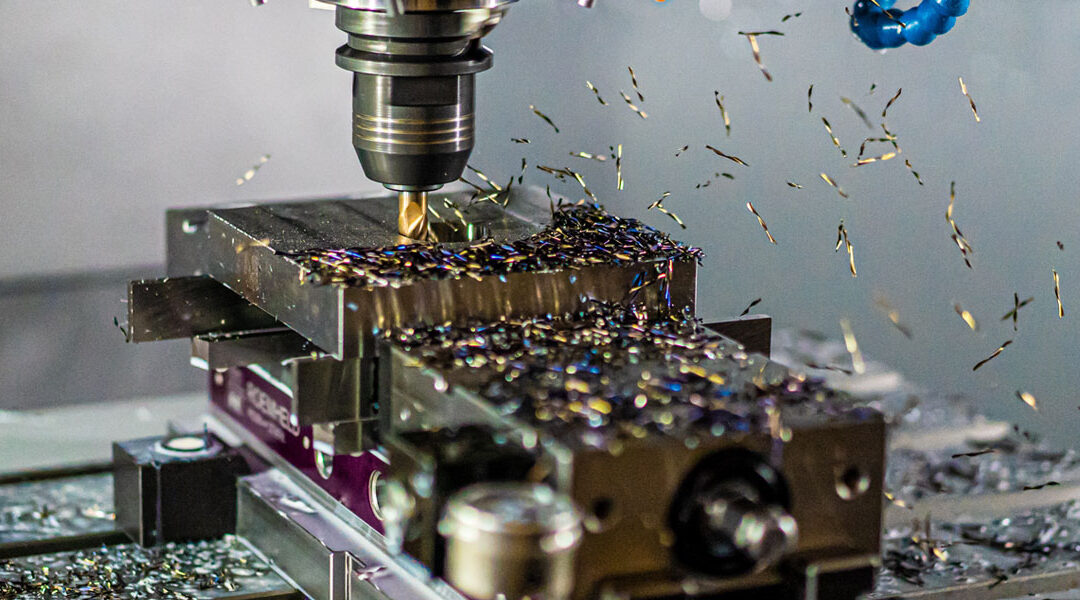With any precision crafting, knowing the materials that will make up the final project before work even begins is important for planning and cost. Precision machining is no different. Knowing what materials and metals to use allows us to give more accurate estimates and quotes for our potential clients. Today, we want to talk about what types of metals we use for machining.
There are actually five types of metals we may use when we work on a project. Each metal has different properties, and therefore different pros and cons. Let’s talk about them:
Learn the Ins and Outs of 5-Axis Machining
1. Ferrous Metals
Ferrous metals are those that contain iron, such as steel or cast iron. Their primary characteristic is a high strength-to-weight ratio which means it can be used where a product must be strong and lightweight. Ferrous metals are also durable, high quality, contain magnetic properties, and can be recycled which is more environmentally friendly than other metals. While they have numerous advantages, ferrous metals also tend to corrode easily and have a high cost to finish a project. These metals are very strong but are heavier than aluminum and titanium alloys which can be a disadvantage depending on the project. Some common examples of ferrous metals are stainless steel, cast iron, carbon steel, and wrought iron.
2. Aluminum
Of non-ferrous metals, aluminum is the most commonly used. For aluminum, it has the advantage of being easy to work with, exhibits a great strength-to-weight ratio, and even has some corrosion resistance. Aluminum comes in different grades or alloys which can be used for different applications. Aluminum 2011 is designed for machining but 6061 is also one of the more common grades. Like all aluminum grades, this material is strong with good workability and highly economical since it is widely available.
Since aluminum is available in a number of different alloys, each type has different properties that make it perfect for some applications and not so much for others. When it comes to machining with aluminum, it is crucial to have a complete understanding of the workability of each type. While it is a strong and highly economical material, aluminum is soft by nature with a low melting temperature which makes it difficult to work with.

A part machined out of aluminum.
3. Brass and Other Copper Alloys
Many people choose brass or copper for their decorative properties, electricity, and heat conductivity as well as corrosion resistance. Brass and copper are easily machined and are often used in architectural applications like joining, finishing, and plating. While the use of brass and copper can provide a high-class look, they do require a great deal of maintenance since they are prone to tarnish.
4. High-Temperature Nickel
High-temperature nickel is a type of superalloy that was developed for use in aircraft engines. Since they’re primarily used in turbine engines for aerospace and marine industries, the strength of this metal is unbelievable. High-temperature nickel can withstand extreme temperatures and highly corrosive environments. On the other hand, high-temperature nickel can be extremely difficult to machine with because of its strength and ability to withstand high temperatures.
5. Titanium
Commonly used in aerospace and transportation-related industries, titanium offers strength and corrosion-resistant properties. Titanium is twice as strong as aluminum but it also weighs about 60% more. In addition to its strength, titanium is also biocompatible which means that it is non-toxic and won’t be rejected by the human body. While it offers these benefits, titanium is difficult to machine with, extremely expensive, and will even burn in air temperature lower than its melting point.
From strength and durability to cost and corrosion resistance, there are numerous factors to consider before choosing a metal. Understanding the properties and characteristics of these metals will allow you to determine the appropriate alloy for each project.


